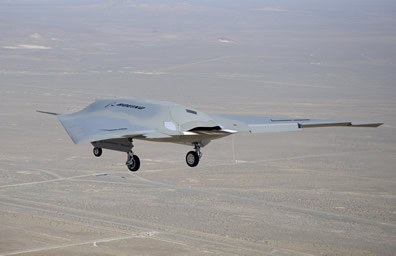Boeing made Phantom Ray unmanned airborne system (UAS) successfully completed its first flight April 27 at NASA’s Dryden Flight Research Center at Edwards Air Force Base, Calif. Since being delivered to the base in December 2010, the flight demonstrator, based on the company’s Phantom Works’ X-45C, originally developed for the DARPA/USAF Unmanned Combat Aircraft System (UCAS) program. Months before the first flight the unmanned plane went through extensive pre-flight testing, culminating in a series of high-speed taxi tests performed in March. These tests validated ground guidance, navigation and control and verified mission planning, pilot interface and operational procedures. On its first flight Phantom Ray was airborne for 17-minute mission, flying to 7,500 feet and reaching a speed of 178 knots.

The flight demonstrated Phantom Ray’s basic airworthiness, setting the stage for additional flights in the next few weeks. “The first flight moves us farther into the next phase of unmanned aircraft,” said Craig Brown, Phantom Ray program manager for Boeing. “Autonomous, fighter-sized unmanned aircraft are real, and the UAS bar has been raised. Now I’m eager to see how high that bar will go.”

Boeing considers the current company-funded flights will prepare Phantom Ray to support potential missions that may include intelligence, surveillance and reconnaissance; suppression of enemy air defenses; electronic attack; strike; and autonomous air refueling. Boeing is one of four candidates offering unmanned platforms for the U.S. Navy stealthy Unmanned Carrier-Launched Airborne Surveillance and Strike project (UCLASS) program projected to become operational by the turn of the decade. Besides Boeing developing the Phantom Ray, other likely competitors are Lockheed Martin (has developed the RQ-170 Sentinel, which already entered operational use), Northrop Grumman (its X-47B technology demonstrator will begin carrier suitability tests next year), and General Atomics (proposing a naval version of Predator C – Avenger).





















